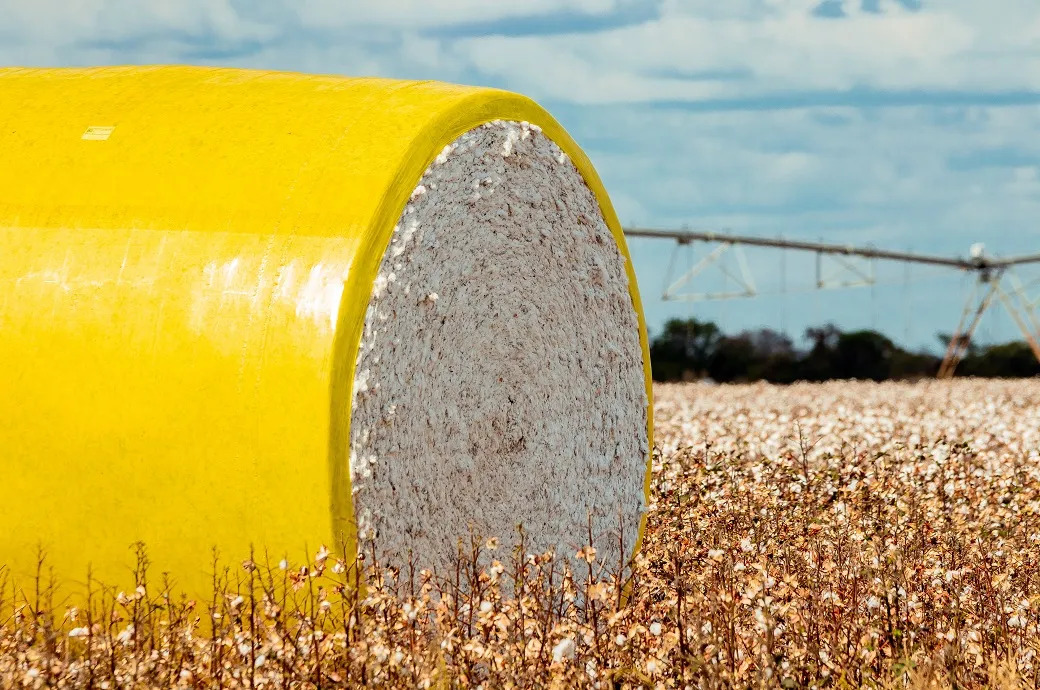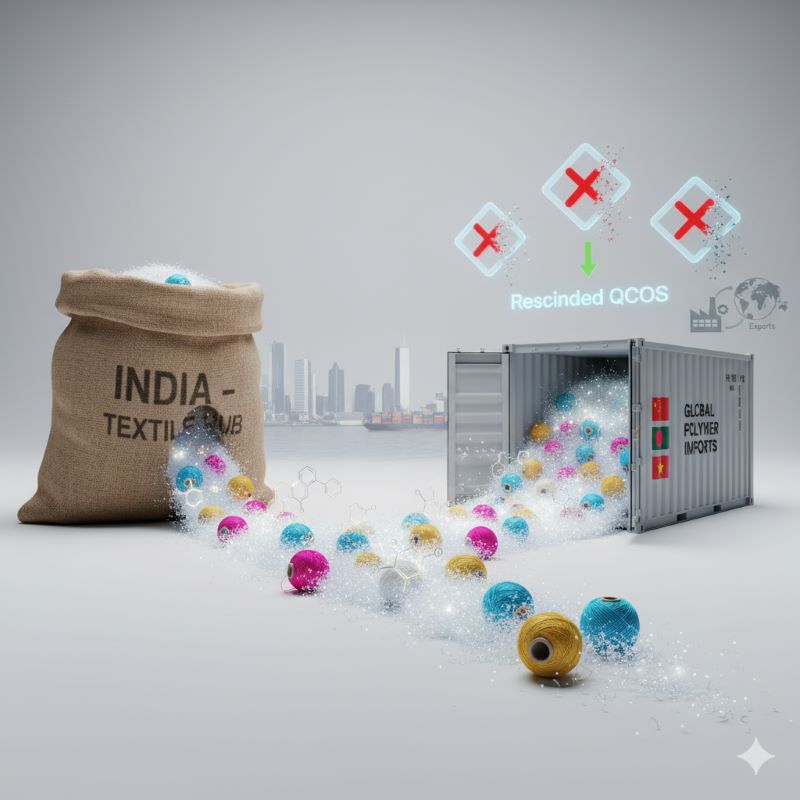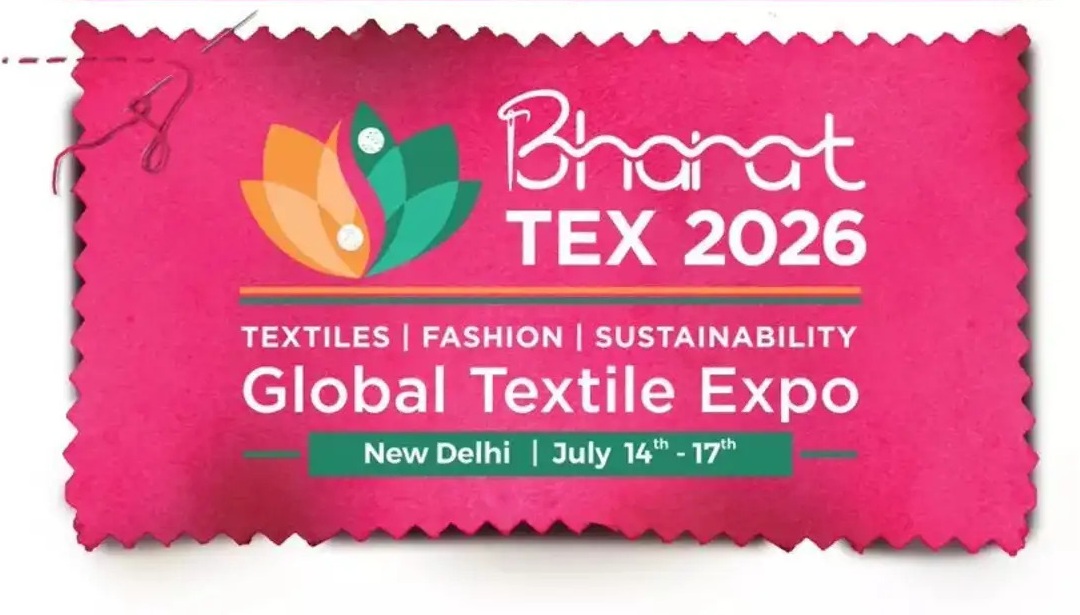FW
The Swiss-based Schärer Schweiter Mettler (SSM) AG launched two new products at the recent ShanghaiTex 2017. The PWX-CTM, for cone-to-muff and the PWX-MTC for muff-to-cone winding, generated tremendous interest. This year’s show attracted a large number of visitors. SSM, as inventor of the electronic yarn traverse system, was present at the booth of their agent Union Trading as well as at Rieter Components. Two machines for the dye package/rewinding process of high elastic yarns had been successfully exhibited.
The best solution to maintain a high residual elasticity of elastic Polyamide (PA) and Polyester (PES) Draw Textured Yarns (DTY) after dyeing is the muff dyeing process with integrated SSM leading yarn winding technology. The new SSM PWX-CTM enables the preparation of low-density muffs while maintaining the highest possible elasticity of the yarn throughout the dyeing process.
For the highest flexible and productive rewinding, SSM PWX-MTC offers the appropriate solution – regardless of whether muffs, hanks, dye packages on dye tubes or coreless dye packages are to be rewound.
Besides the displayed applications, SSM provides a wide range of renowned textile machines. A detailed overview about SSM machinery and supported applications of the textile process chain can be found under Winding Solutions at www.ssm.ch
The 86th edition of the International children's fashion show Pitti Bimbo will be held at the Fortezza da Basso, Florence from January 18 to 20, 2018. The show's previous Winter edition hosted 540 collections of which 315 were from outside Italy, and over 6,700 buyers, for a total of 10,000 visitors. For the forthcoming edition, foreign buyers from Russia, Asia (Hong Kong, China and South Korea), the USA and Europe (France, Germany, Spain, Belgium, the UK and Scandinavia) are expected.
The Italian children's fashion industry is growing significantly reveals SMI data, the Italian fashion and textile industry association, with exports up 2.9 per cent during the period January-August 2017. The UK and Russia were leading destinations, while exports to Spain and Germany fell. 86th Pitti Bimbo will celebrate the 50th anniversary of high-end children’s wear brand Monnalisa, with the show's first evening event on 18th January.
Simonetta will present a collection created in collaboration with Vespa, and Elisabetta Franchi La Mia Bambina will showcase two new lines, Newborn (0 to 18 months) and Baby (6 to 36 months) as well as a new footwear collection produced and distributed by Andrea Montelpare.
As for the show’s sections, #Activelab will be focusing on innovation and research in urban and activewear and feature labels such as Bangbang Copenhagen Aps, Barn of Monkeys, Carlijnq, Duukies Beachsocks, Gardner and the Gang, How to Kiss a Frog, Jborn Kids, Kids on the Moon, Kukukid, Loud Apparel, Lucky no.7, Oji, Tom Joule and Wheat. The Apartment section will concentrate on luxury children’s wear, KidsFIZZ will host creative labels, Fancy Room will feature lifestyle products, from interior design to accessories and tech gadgets, while The Nest will be host a selection of smaller brands and emerging labels, chosen in collaboration with Berlin concept store Little Pop Up Berlin.
The EcoEthic section will be dedicated to sustainable children’s wear brands using organic and bio materials. The show will also present Fashion Comics, featuring a series of mini collections by a selection of emerging fashion designers inspired by the Powerpuff Girls cartoons.
Messe Frankfurt has continued to build on its commercial successes in financial year 2017, thus strengthening its market position among leading international trade fair companies. Due to its outstanding business activities globally, the company will set a new record this year with around 95,000 exhibitors. Messe Frankfurt sales will exceed the €660 million mark for the first time. The company is growing sustainably with consistent investments in events and products, in digitisation and in optimising design and capacity use of its exhibition grounds.
On presenting the Group’s preliminary key figures for 2017, President and Chief Executive Officer (CEO) Wolfgang Marzin exults, “We also make a point of investing counter-cyclically when we deem this to be the right strategic approach”. With around 95,000 exhibitors and 4.3 million visitors – the highest ever – the Group is setting new records, which is also a testament to the resounding success of the 148 innovation platforms held globally under the Messe Frankfurt umbrella.
The company’s sales have grown to an estimated €661 million, despite a cyclically weak event year. This means that Messe Frankfurt has improved upon the two previous record years. With over €271 million, the proportion of sales generated outside Germany is now at 41 per cent. As a result, consolidated annual net income for the Group will once again be healthy at about €40 million.
The company is pushing ahead with its activities in Russia in spite of difficult conditions there. As one of the main organisers in Russia, Messe Frankfurt’s events are among the country’s leading trade fairs. Messe Frankfurt is also behind one of the leading trade fair companies in South America. Our Argentine subsidiary is also making a name for itself by organising and running major international congresses, such as the WTO Congress with 5,000 participants.
To provide training to people in the textile sector under the Mukhya Mantri Kaushalya Yojana (MMKY), the Madhya Pradesh State Skill Development Mission (MPSSDM) has signed an MoU with the National Institute of Fashion Technology (NIFT), Bhopal. The MoU would provide exclusive rights to NIFT for training. As per the scheme, training will be given to around 10,000 candidates in collaboration with several industries. The practical training would lead to recruitment of at least 70 per cent of those who passed. The trainees will get 4 grade certificate from the ministry of skill development and entrepreneurship.
Ttraining would be given in 10 to 12 courses as per industry’s needs. Four courses related to spinning have been identified. State domicile and Class 8th pass out certificates are required for training. The one-month training programme would induct students on batch-basis and each batch will include 30 applicants.
India’s trade gap in November narrowed marginally from a near three-year high last month as export growth grew and import of certain commodities saw seasonal slowdown. The trade deficit increased 3.1 per cent over last year to $13.83 billion. While the deficit was higher than the same month last year, it has narrowed from $14 billion in October. Japanese brokerage Nomura in a report said, The trade data reflects “a solid export rebound” but with imports still elevated, the deficit narrowed only marginally.
Exports grew after dropping for the first time in 15 months in October. The value of outbound shipments grew 31 per cent over last November to $26.2 billion, particularly from a steep rise in export of engineering and petroleum products. Morgan Stanley Research had reported the trend is similar to that seen in other Asian economies like Korea, China and Taiwan which also saw strong export growth,
Indian exports have been on a downtrend since 2014-15, adversely impacted by a global slowdown, a sharp fall in commodity prices and currency fluctuations. It started recovering in July 2016 and had been on the rise since, but growth was offset by India’s large import bill led by higher import of gold and oil.
Export volume growth in November was at 23.1 per cent, recovering from a 4 per cent decline in October, according to Nomura. "Sector-wise, the pick-up in exports was led by the agriculture products, chemicals, engineering goods and gems & jewellery segments, although growth in labour-intensive exports remains weak, possibly because of working capital issues due to delayed goods and services tax refunds," the report said. Imports in November rose 19.6 per cent over last year to $40 billion. The pace of import growth was faster than that seen in October due to a sharp rise in crude oil prices and the value of inbound shipments of precious stones and pearls.
Gerber Technology, a world leader in integrated software and automation solutions for the apparel and industrial markets, will be sponsoring the 2018 Professional Clothing Award (PCA) Vision Best Design (University). The contest requires students to share their vision of stylish, functional professional clothing [corporate wear, workwear and personal protective equipment (PPE)] that can be worn for a specific job role in a sector of their choice.
The aim is for the students to deliver innovative designs that truly meet the needs of the male/female worker to help them perform their job to the best of their ability in their standard job environment. The Best Design Award (University) will be awarded to the University or College which has the best overall design submissions meeting the PCA Vision contest criteria.
Yvonne Heinen-Foudeh, Marketing and Communications Director, EMEA for Gerber Technology says, “We are very proud to be sponsoring the Vision part of the prestigious Professional Clothing Awards. We have nominated a pattern and market expert from Gerber Technology to join the judging panel to help select the additional Vision Award winner and look forward to seeing the applications. Gerber’s mission is to make it easy for anyone in the world using textiles, leather, composites or other flexible materials to go from concept to market quickly and seamlessly. The provider of integrated automation solutions with UK premises in Manchester has been empowering educators and those who support them with technology to help prepare the next generation of fashion leaders for nearly 50 years.
The 2018 PCA Vision contest forms the basis for the support that the Professional Clothing Awards and the professional clothing industry gives to young, upcoming designers. PCA Vision is an international contest open to students from across Europe and winners will be announced at the opulent awards ceremony held on Wednesday 20th June 2018 at the Park Plaza London Riverbank.
Official forecasts of US and world cotton ending stocks have got tighter. A 3,40,000 month-over-month increase in foreign consumption, most of which was in India, reinforced the tightening of world balance sheet. The bottom line was a large 2.88 million bale reduction in 2017-18 world ending stocks. Such an adjustment would be price supportive.
The December revisions to 2017-18, US cotton continued a trend of modest adjustments to US production and ending stocks. On the supply side, the all-cotton national average yield was raised slightly to a record 902 pounds per acre. This resulted in a 63,000 bale net increase in US production.
US exports were raised 3,00,000 bales month-over-month, presumably to jibe with the historically fast pace of total export commitments of US cotton. The upward revision of US exports made up for the downward adjustments in foreign production. After slightly adjusting the unaccounted fudge factor, projected US ending stocks declined from 6.1 to 5.8 million bales, month over month.
The reduction in supply on the Indian subcontinent is in keeping with recent news reports and speculation about lower production there, so this outcome was probably expected by many traders and analysts. The holidays are generally not known for tightening. Wallets get lighter. Beltlines get wider.
Bangladesh has called for investments from Indian entrepreneurs to give a boost to its growing readymade garment manufacturing sector. The country wants to utilise the market share vacated by China with proper investment inflow. This is where the opportunity for Indian investors lies.
With a friendly political and commercial environment, an over 4,000 km common boundary and well set immigration as well as communication facilities, Bangladesh is seen as a favorable place for Indian entrepreneurs. The similar social environment between the two countries is another positive factor. While Indian entrepreneurs can gain out of their investment in the sector in Bangladesh, more number of workers from Bangladesh can have employment.
While the global clothing products market has gone down to $444 billion in 2016 from $450 billion in 2015, Bangladesh could have increased its share in global apparel exports up to 6.4 per cent from 5.9 per cent during the period to maintain its second position in the sector. But the share of China, the undisputed first, has gone down from 39.3 per cent to 36.4 per cent while the other close competitors, Vietnam, India, Turkey and Cambodia, recorded a share of 5.5 per cent, four per cent, 3.4 per cent and 1.4 per cent respectively.
The Federation of Indian Art Silk Weaving Industry (FIASWI) has expressed concern for power loom weavers in the country because of huge escalation of cost in fabrics , increase in job losses and import of fabrics due to non-refund of accumulated tax credit under GST.
FIASWI decried the fact that the Central government was earning Rs 10,000 crore in taxes from yarn spinners pre-GST and post-GST, the estimated revenue has doubled to Rs 20,000 crore. It is only the man-made fibre (MMF) sector which is losing out on huge part of its capital following non-refund of accumulated input tax credit.
FIASWI chairman Bharat Gandhi was unhappy with the injustice, “We are demanding natural justice for MMF sector. All other sectors are getting input tax credit refund, except for MMF sector. The GST on yarn is at 12 per cent and that the fabric attracts 5 per cent, leaving out 7 per cent accumulated tax credit for power loom weavers. There is an estimated capital loss of Rs 7,000 per annum to power loom weavers alone.”
Gandhi is of the view the textile industry is worried that costs may escalate by around three to five per cent, which could further impact capacity utilisation. The percentage share in cost escalation is proportionate to the range of accumulation of input tax credit on sale value, especially for sectors like power loom, handloom and processing. The first ever ‘baseline survey of power loom sector’ conducted by AC Neilsen and ORG MARG for the Ministry of Textiles in 2014 recorded that Surat was the biggest centre for man-made fabrics. The survey found there were a total of 4,88,649 power looms in Gujarat with Surat having the maximum number of 4,70,496. There were only 14,364 shuttleless looms in Surat.
The annual polyester yarn consumption by power loom units in Surat was set at 40,610 lakh kg and annual fabric production at 91,871 lakh metres. The total fabric production in Gujarat was at 97,206 lakh metres, the survey revealed.
The FIASWI is holding its annual general meeting (AGM) in the city on January 6, where representatives from textile sectors from centres including Maharashtra, Salem, Tamil Nadu, Karnataka, Mumbai and Surat will remain present. The agenda in the AGM will be issues faced by the textile sector under GST.
"The Cotton Textiles Export Promotion Council (TEXPROCIL) celebrated the achievement of its member exporters at theirannual awards presentationrecently. The Minister of Textiles and Information & Broadcasting, Smriti Irani, in a video message to the industry, complimented the award winners to keep up the good work in the sector. Thee Textiles Commissioner, Dr.Kavita Gupta was the Chief Guest at the function."

The Cotton Textiles Export Promotion Council (TEXPROCIL) celebrated the achievement of its member exporters at theirannual awards presentationrecently. The Minister of Textiles and Information & Broadcasting, Smriti Irani, in a video message to the industry, complimented the award winners to keep up the good work in the sector. Thee Textiles Commissioner, Dr.Kavita Gupta was the Chief Guest at the function.
Ujwal Lahoti, Chairman, Texprocil congratulated all the award winners for facing the challenges of a slow global demand and intense price pressures to emerge leaders in their respective line of businesses during 2016-17.
The Chairman complimented Smriti Irani for her untiring efforts in conducting extensive consultations with all the stakeholders from time to time to understand the issues faced by the textiles industry.
He said that she was instrumental in the inclusion of made ups under the ROSL scheme which was originally introduced to cover only readymade garments and also thanked her for keeping the entire cotton textiles sector at the GST rate of 5 per cent and for reducing the GST rate on job work in the textile sector to 5per cent.
Lahoti mentioned that the Government recently increased the ROSL rate for cotton made ups from 1.55per cent to 2.20per cent and also the entitlement of the duty credit scrips on export of made ups from 2per cent to 4per cent under the MEIS. These measures will enable made ups exporters to partially overcome the disadvantage which they are facing in leading markets like the EU and the US versus products from some of the competing nations which enjoy zero duty access,
However he added that delays in GST refunds are leading to serious working capital and financial problems for many of the textiles units in addition to the procedural and compliance issues.
Lahoti stated that cotton yarn was one single product for which there were no benefits under the FTP 2015-20. He urged the government to include cotton yarn under the MEIS and 3per cent Interest Equalization Scheme.
Dr Kavita Gupta, amongst other points, stressed the fact that the industry should focus on technical textiles as it still remained a vastly unexplored segment in the textile sector. She added that the government’s support through various schemes like the recent increase in MEIS should spur the industry to spiral towards healthy growth.
The coveted highest global exports platinum trophy was presented to Welspun Global Brands Ltd. Other recipients of the Awards included Vardhman Textiles, Trident Ltd., Alok Industries, Arvind Ltd, Loyal Textiles, Premier Mills, Lahoti Overseas among others.













